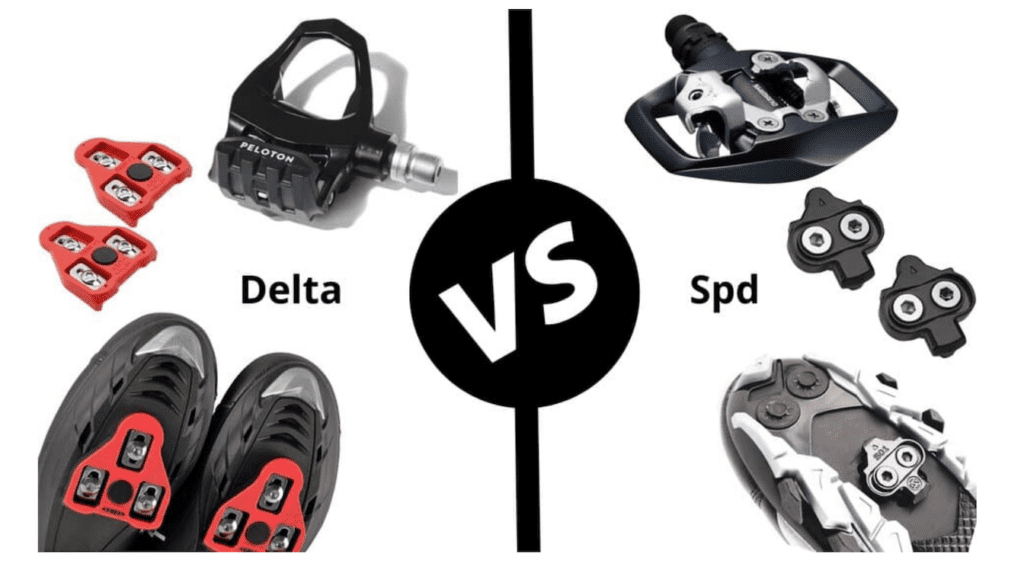Ah, the question indoor cycle instructors get most often.
Do I need to invest in a pair of proper cycling shoes?
If you want to increase your overall performance and enjoy a safer and more effective ride, then yes.
Investing in a pair of indoor cycling shoes is key.
Is it worth it if you only take one cycling class a week?
Our Brand Ambassador, Kim Gibas, always encourages her students to get their own pair of indoor cycling shoes.
"Whether you ride a lot or only occasionally I highly recommend investing in a cycling shoe for several reasons.
Not only are they more comfortable, but they’re also safer, they give you better control over the bike, and will result in greater fitness gains.
Being securely connected to the pedal ensures all the power generated in your legs gets delivered through the pedal instead of being lost in the flex or movement of a running shoe.
Ultimately, you will be able to pedal harder, faster, and engage your muscles better through both the push and pull of a pedal stroke."
Are indoor cycling shoes the same as outdoor cycling shoes?
Even though they’re both designed to give you a better riding experience, the way each show is made is customized to the type of cycling.
Outdoor cycle shoes have a more flexible sole and are designed to keep your feet dry from the elements.
Indoor cycle shoes have a very firm sole and are designed to have maximum breathability since they don’t need to worry about your feet getting wet. (other than the dripping sweat from a great workout!)
What makes a good indoor cycling shoe?
When looking for an indoor cycling shoe look at the sole, the closure, the material, the cleat, and of course, the fit.
The sole of indoor cycling shoes can be made of three different materials:
Carbon fibre
The stiffest sole and most expensive option
Fibreglass
A middle ground, offering a stiff sole and a mid-range price
Plastic
This sole is more flexible and has a reasonable price point
The closure can also come in different forms, though we recommend these two:
Velcro
These are the easiest to get on and off while still keeping your foot secure during your ride. They’re also the most affordable.
Boa
This system replaces traditional laces with stainless steel wires. You use a turning knob to tighten the shoe. This allows for micro-adjustments with no pressure points.
The material of the shoe’s upper can be synthetic or leather. Leather is more expensive, but both will allow your shoes to have good breathability to keep your feet cool and dry.
You have two choices when it comes to selecting a cleat style for your shoe.
Delta
A 3-hole system that clips into the bike pedal. This form is less common in studio cycles, but it is offered in larger studios. The clips are larger than SPD cleats and are most often found on road bikes.
SPD
This stands for Shimano Pedalling Design and is a rectangular, 2-holed clip. They are most common in studio cycles and are attractive because of the recessed cleat.
The BODY BIKE comes standard with a 2-in-1 pedal with an SPD clip.
The fit of your indoor cycling shoe should be snug, but still allow your toes to move.
Kim gives these tips when purchasing your own indoor cycling shoes.
- First and foremost you want a shoe that is comfortable and fits your foot well. You want something that fits snug to minimize friction and movement in the shoe, but not too tight that it creates any pressure points or discomfort.
- A shoe with a stiff sole is ideal, as it will help to better transfer power from your leg to the crank.
- If you plan on walking around with them on, look for a shoe with a recessed cleat to make it easier & safer walking to and from class at your gym/studio
- You can’t go wrong with a Velcro or boa closure system - both will do the trick!
"And the best part - they don’t wear out as quickly as your running shoes/trainers and often last for quite a few years before needing to be replaced."
